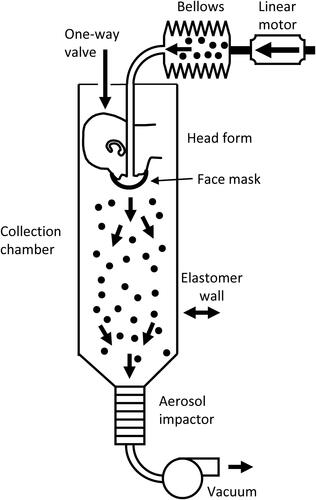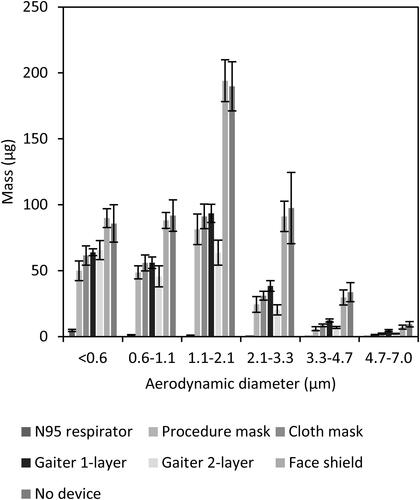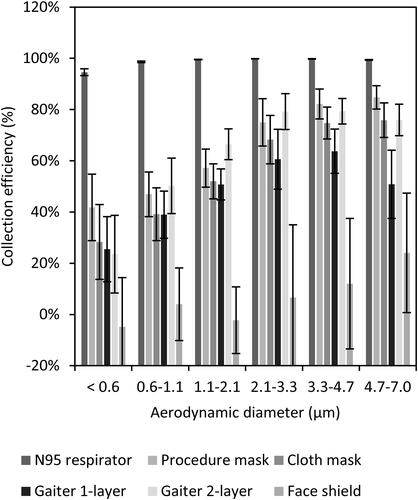Figures & data
Figure 1. Cough aerosol simulator system for source control measurements. The system consists of an aerosol generation system, a bellows and linear motor to produce the simulated cough, a pliable skin head form on which the face mask, neck gaiter or face shield is placed, a 105 liter collection chamber into which the aerosol is coughed, and an Andersen impactor to separate the aerosol particles by size and collect them. More information about the cough aerosol simulator is provided in the SI.

Figure 2. Mass of aerosol collected in each size fraction. The graph shows the amount of simulated respiratory aerosol that was collected from the collection chamber in each aerosol particle size fraction after a single simulated cough. The bars show the mean and standard deviation. A larger color version of this figure is shown in the SI.

Figure 3. Collection efficiency of face masks, neck gaiter and face shield. The collection efficiency is the percentage of aerosol particles that were blocked by the face mask, neck gaiter or face shield compared with experiments without a device. The plot shows the means and standard deviations of the collection efficiency in each size fraction. A larger version of this figure is shown in color in the SI.

Table 1. Total mass of aerosol expelled into collection chamber and device collection efficiencies.
Table 2. Comparison of aerosol mass expelled into the collection chamber while wearing face masks, neck gaiters and face shields.
